Bugle Band Contest - West of England Bandsmens Festival Outdoor Contest
About
From the beginning
Transport back to 1912, a time when the gramophone was in its infancy and the radio had not been invented. Live performances were the only opportunity of enjoying music and it was against this backdrop that the idea of a band contest was greeted with such enthusiasm.
Within the concentrated Mid-Cornwall clay country villages there were in excess of a dozen bands, which gave a tremendous base, and it was estimated that around 6,000 attended that first contest.
With no formal grading structure in place it was decided to run the contest in two sections determined by the size of the band.
Class B was for bands of 16 players and under, whilst Class A was for the larger bands. We believe this was the first contest to attempt some form of grading. It was intended to be a one off event to raise funds for the building of a Working Men’s Institute in the village, but such was the success of the day it was decided to continue as a Festival in its own right.
The First World War brought an abrupt end to such social gatherings, but the contest was resurrected at the cessation of hostilities to herald in what is generally perceived as the golden age of the contest. Big name bands, (both Munn & Feltons and Black Dyke competed at Bugle in the same year that they won the Nationals), and huge crowds gave Bugle a growing national reputation.
Suspension of the contest was again necessary for the Second World War, but 1947 saw its revival and the Festival has now seen an unbroken run of over 70 years. Much has changed, but the Festival has remained true to its original concept as an open air event. For one year in 1971, with stormy weather forecast, the contest was taken under canvas, but it was not generally liked and the experiment has never been repeated.
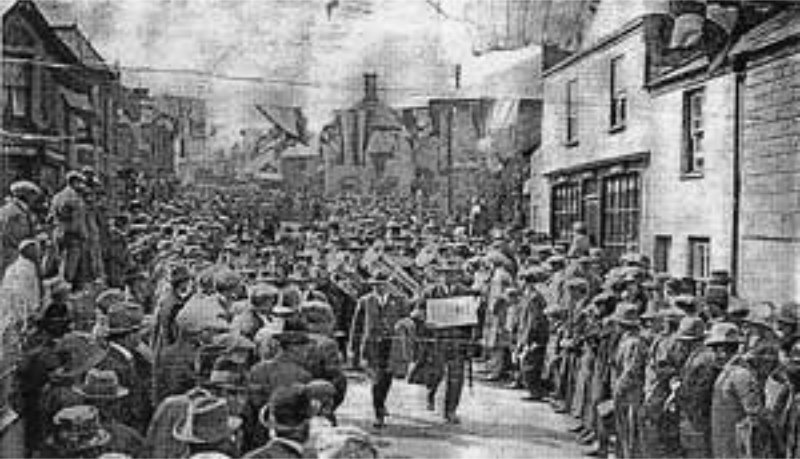

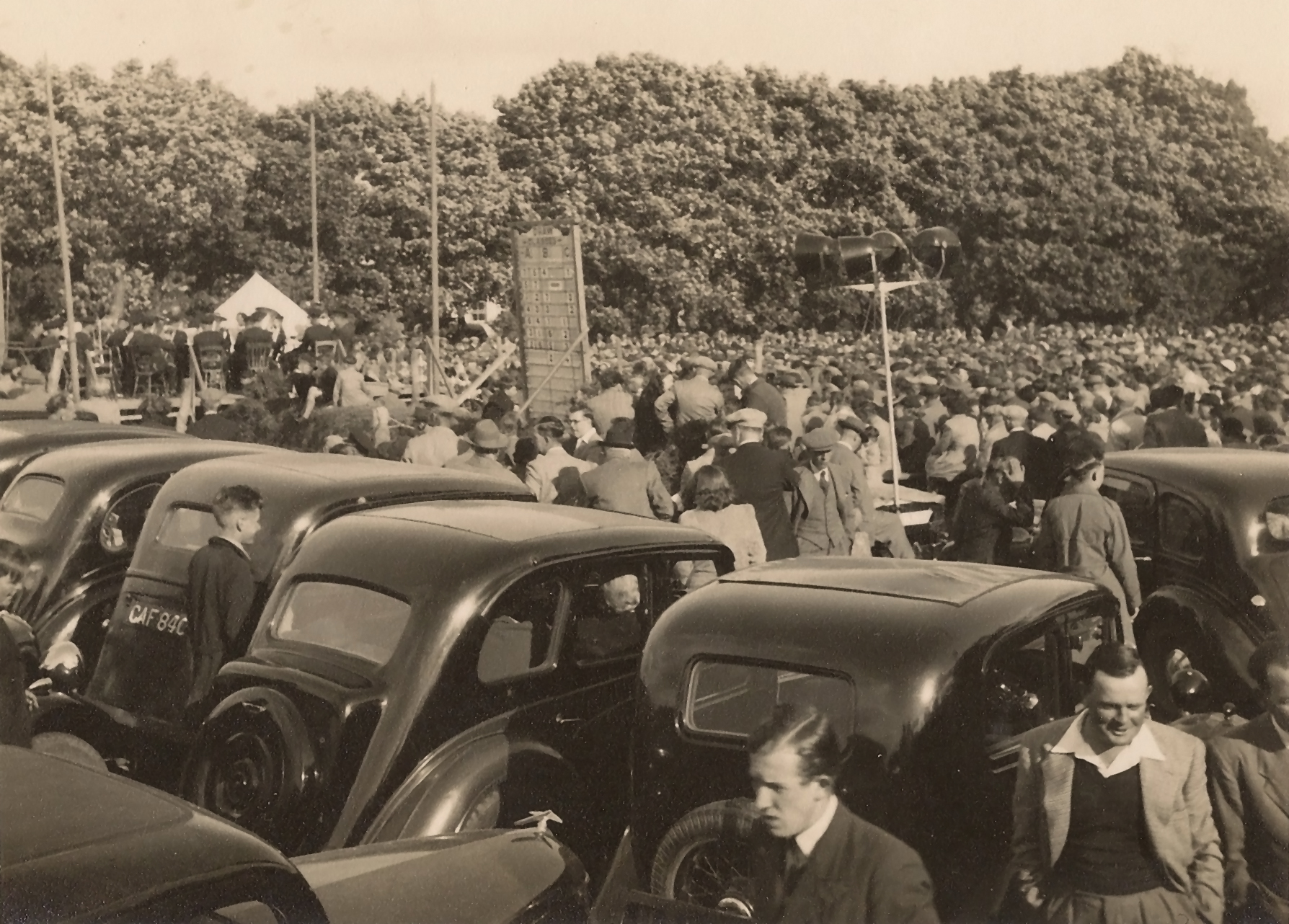
The most significant change has been to transfer the contest from the grounds at Peniel to the present venue at Molinnis Park. Cloaked in the historic past and set in atmospheric surroundings, Peniel had become the spiritual home of the Festival, but the total inadequacy of car parking arrangements for an increasingly mobile population and the lack of basic services was making it increasingly untenable. It was a brave decision to move, but one that probably ensured the long-term survival of the Festival.
The Festival is not a fund raising venture for any organisation, its sole purpose being the continuation of the contest for the greater enjoyment of brass band music, as is defined by our Registered Charity status. Whilst attendance’s have fallen away from those heady pre-war years, it would still take a larger hall than Cornwall possesses to house the contest indoors.
The Contest Today
Although the outdoor venue gives a general air of informality, players and audience treat the contest as a very serious competition.
Five “borrowed players” are permitted, providing they are from a band of the same (or lower) Grade.
Competition is run to the Five National Grades. A Youth Section is also included, but to cover local considerations this is run under our own Festival rules. The most significant departure is that we allow two senior players to take the stage.
In 2013 the committee decided to take the bold move of introducing a Training Section. This was done to give younger players and senior beginners the opportunity to experience contest conditions and enjoy the unique experience that is playing on the stage at Bugle.
Each class has a set test piece, the placings for which decides the Section winners. Additionally a second piece is set for the top sections, usually a Chorus, Hymn Tune or March. This is an historical hang over, and until more recent times the points awarded were aggregated to decide the class winners. We now feel the Test Piece is the major piece, but because of the nature of our audience the secondary piece has been retained to give variety.
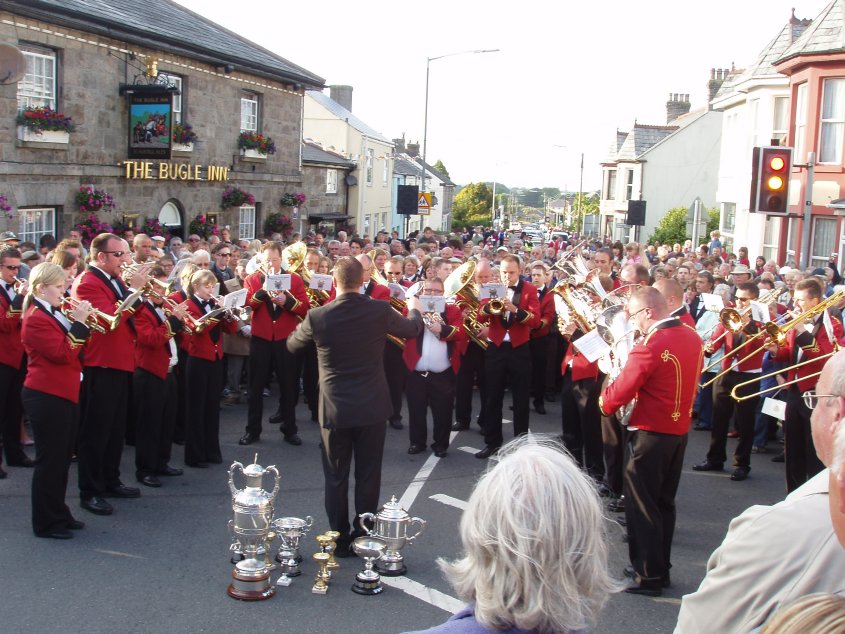
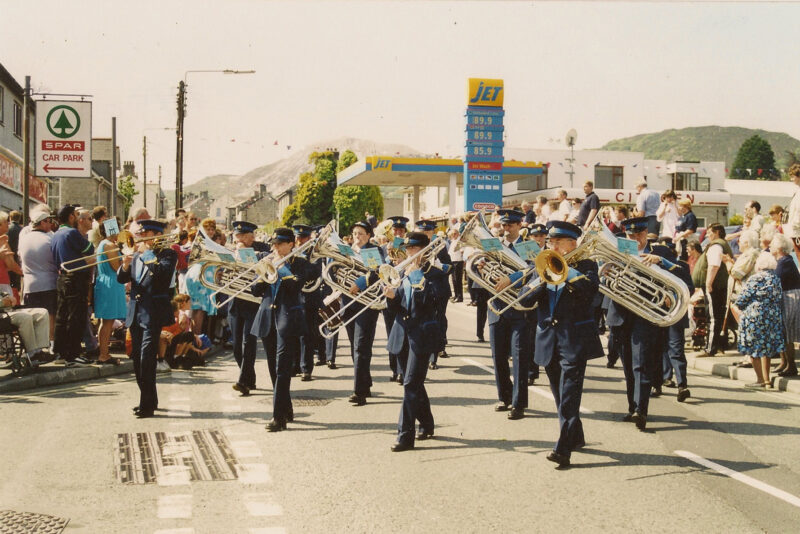
March to the Contest Grounds
The march to and from the contest grounds was introduced at the inaugural Festival in 1912, and has been retained as a popular feature ever since, although optional for the bands. The morning march starts approximately one hour before the contest itself and is but a short distance from the village centre. The Deportment Class is now adjudicated on the march, although when initially introduced the Deportment Judge sat at a small platform alongside the main stage and the band was rather oppressively assessed from the moment of registration.
This class was introduced at a time when little attention was paid to uniforms, bands would often take the stage in “civvies” and, as the judge often commented, “in brown boots”. It certainly served the purpose of raising awareness in this respect, for no band would now be seen out of uniform.
Playing in the square
At the close of the contest the bands return to the village centre, where the Royal Trophy winners sign off the day by playing in the square. This is now well organised, but in early years there were some chaotic scenes as the village could not contain the mass of people, compounded by bands gaining on each other on the long march from Peniel (the then venue), often resulting in up to three bands playing simultaneously in the centre of the village.
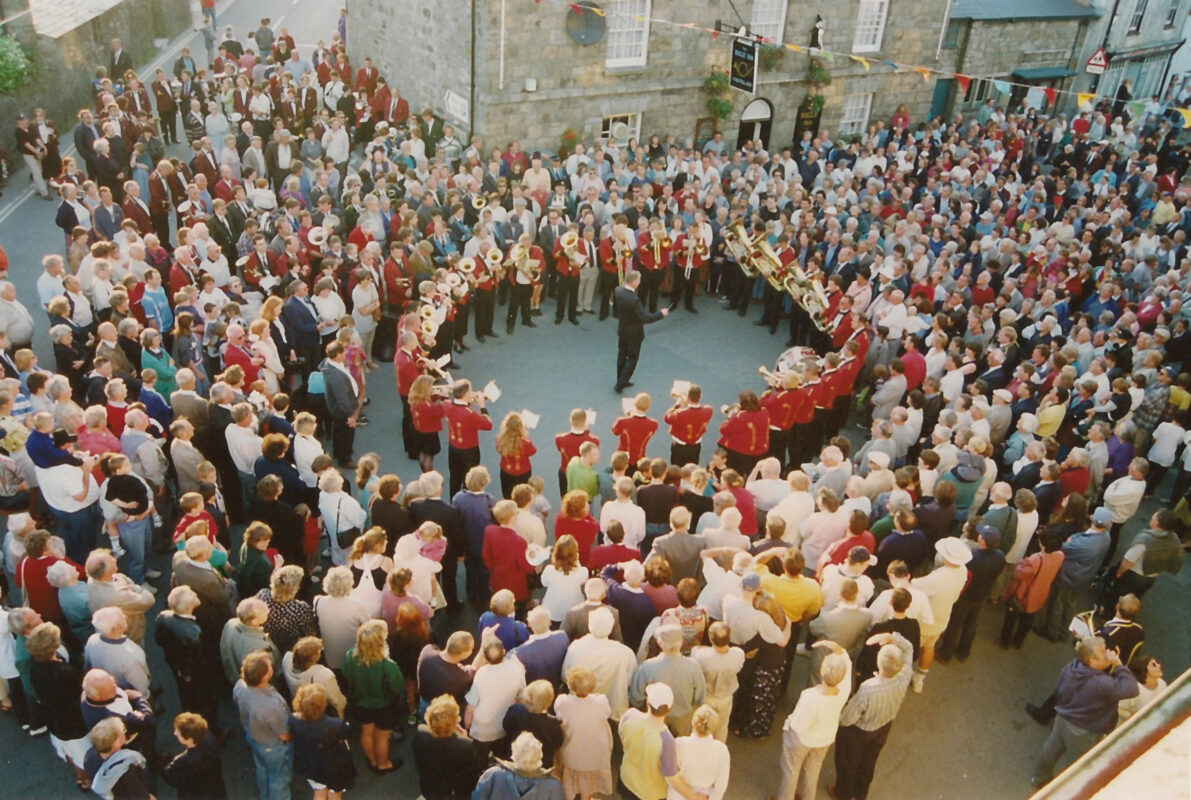
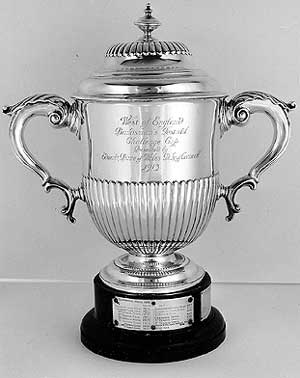
Royal Trophy
A comprehensive prize list is on offer, full details of which are given in our annual Schedule.
Over the lifespan of the Festival an unrivalled range of trophies have been donated, and are now second to none. There are more than forty trophies competed for each year.
Pride of place goes to the Royal Trophy which is awarded to the Championship Section winners. It was presented to the Festival in 1913, by the late Duke of Windsor, then Prince of Wales and Duke of Cornwall, and to this day is the only trophy with a royal connection in the brass band world.

